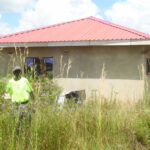A shocking case of baby swapping has rocked the United Bulawayo Hospitals (UBH), leaving two families reeling and raising serious questions about hospital procedures. The incident, which involved two mothers who delivered babies around the same time, came to light after one mother’s persistence and a DNA test revealed the devastating truth.
The ordeal began when a mother from Cowdray Park, who had undergone a Caesarean section, gave birth to a baby boy. Shortly after birth, both babies were taken for cleaning. However, when the Cowdray Park mother was reunited with her infant, she was given a baby girl. A source close to the mother revealed that a scan a day before the delivery had confirmed she was expecting a boy. When she raised her concerns with the nurse who had cleaned the babies, the nurse dismissed her anxieties, suggesting the effects of the Caesarean section’s anaesthesia were affecting her memory.
This initial dismissal, however, did not deter the Cowdray Park mother. Driven by her unwavering maternal instinct, she sought independent verification. She commissioned a DNA test at a private Bulawayo laboratory, a decision that would ultimately expose the hospital’s grave error. The DNA test unequivocally confirmed her suspicions: the baby girl was not hers.
Armed with this irrefutable evidence, the mother confronted hospital authorities, triggering a chain of events that exposed the full extent of the mix-up. The hospital subsequently contacted Zephaniah Dlamini, head of the applied genetics testing centre at the National University of Science and Technology (NUST), to investigate the matter.
Dlamini confirmed the distressing news. He told The Chronicle: “The two women were in the same ward at UBH and delivered around the same time. One woman asserted that her child was a boy after she was given a girl after cleaning, but the other mother also adamant that the boy was hers.” Dlamini’s team conducted further DNA testing, conclusively proving that the babies had indeed been swapped.
The revelation was particularly devastating for the Esigodini couple who had been given the baby boy. The shock of the discovery was so profound that police intervention was required to persuade them to participate in the DNA testing process, highlighting the emotional turmoil the incident caused.
The UBH chief executive officer, William Busumani, declined to comment on the matter, stating that he does not discuss “patient information.” This lack of transparency from hospital leadership has only added to the public’s concern and calls for a thorough investigation into the hospital’s practices.
The incident raises serious concerns about the potential for similar errors and the need for robust measures to prevent such occurrences in the future. The lack of accountability from the hospital administration has fueled public outrage and demands for greater transparency and improved protocols to safeguard newborns.
Following the DNA confirmation, the two mothers were finally reunited with their biological children, bringing a measure of closure to this distressing episode. However, the emotional scars of this experience will likely linger for both families












